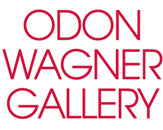Joan Miró
Spanish
We are actively seeking to acquire works by Joan Miro.
Though he began as a Cubist, Joan Miro was one of Surrealism’s greatest exponents. The Surrealist principles were based on the concept of automatism and followed the writings of Sigmund Freud and Andre Breton. Miro’s dream-like forms are both natural and spontaneous. His style is often labeled as “biomorphic abstraction” because his designs are fluid and curvilinear rather than geometric.
Miro did not paint objects recognizably after 1923, but his forms were always tokens of real things. “Form for me is never something abstract”, Miro once said. “It is always a token of something… For me, form is never an end in itself.”
Parallel to his paintings, Miro created numerous posters – advertising his own exhibitions, cultural events, and books. His themes are similar to those in his paintings, that is, simplified: everything appears as straightforward as possible. Between 1954 and 1959, Miro did not paint a single canvas, concentrating instead on ceramics and printmaking techniques. Posters for advertisements were made from lithographs, a planographic process that allowed Miro to be equally spontaneous as he could be while painting or drawing. As Giuseppe Marchiori was to remark, this long parenthesis led to “new spatial solutions, the simplification of images within a new relation between the signs, lines, and the painted surface.”




